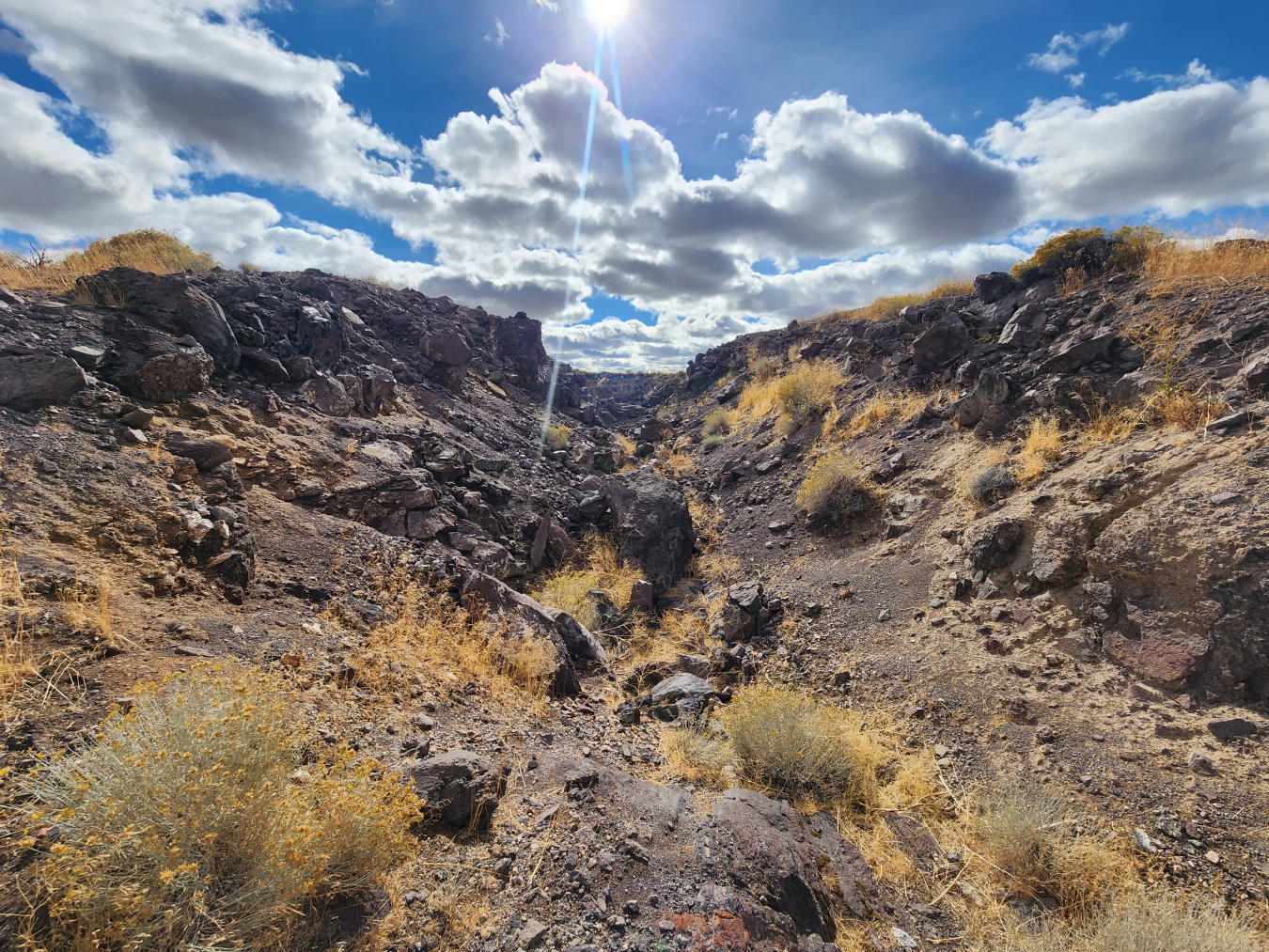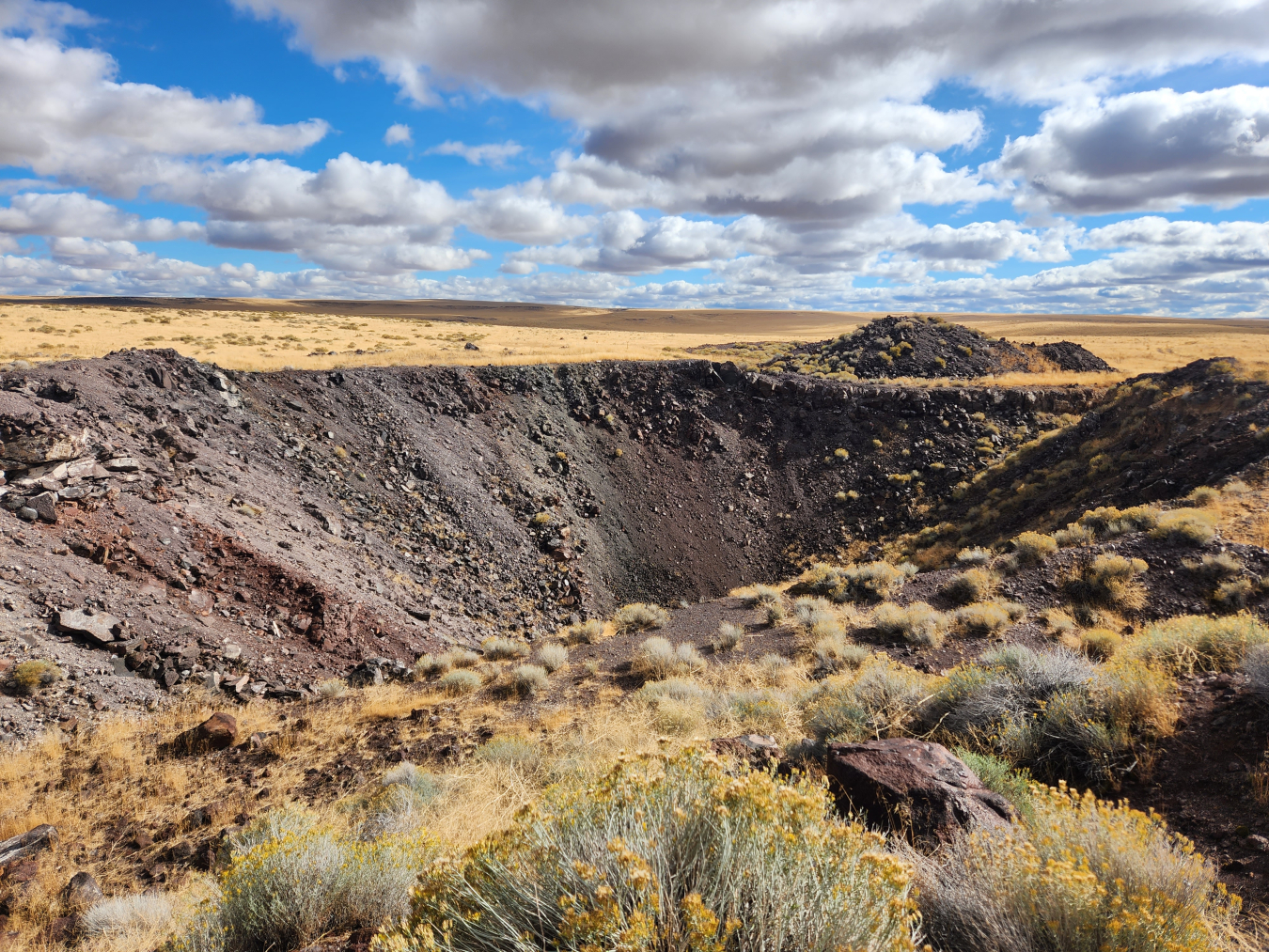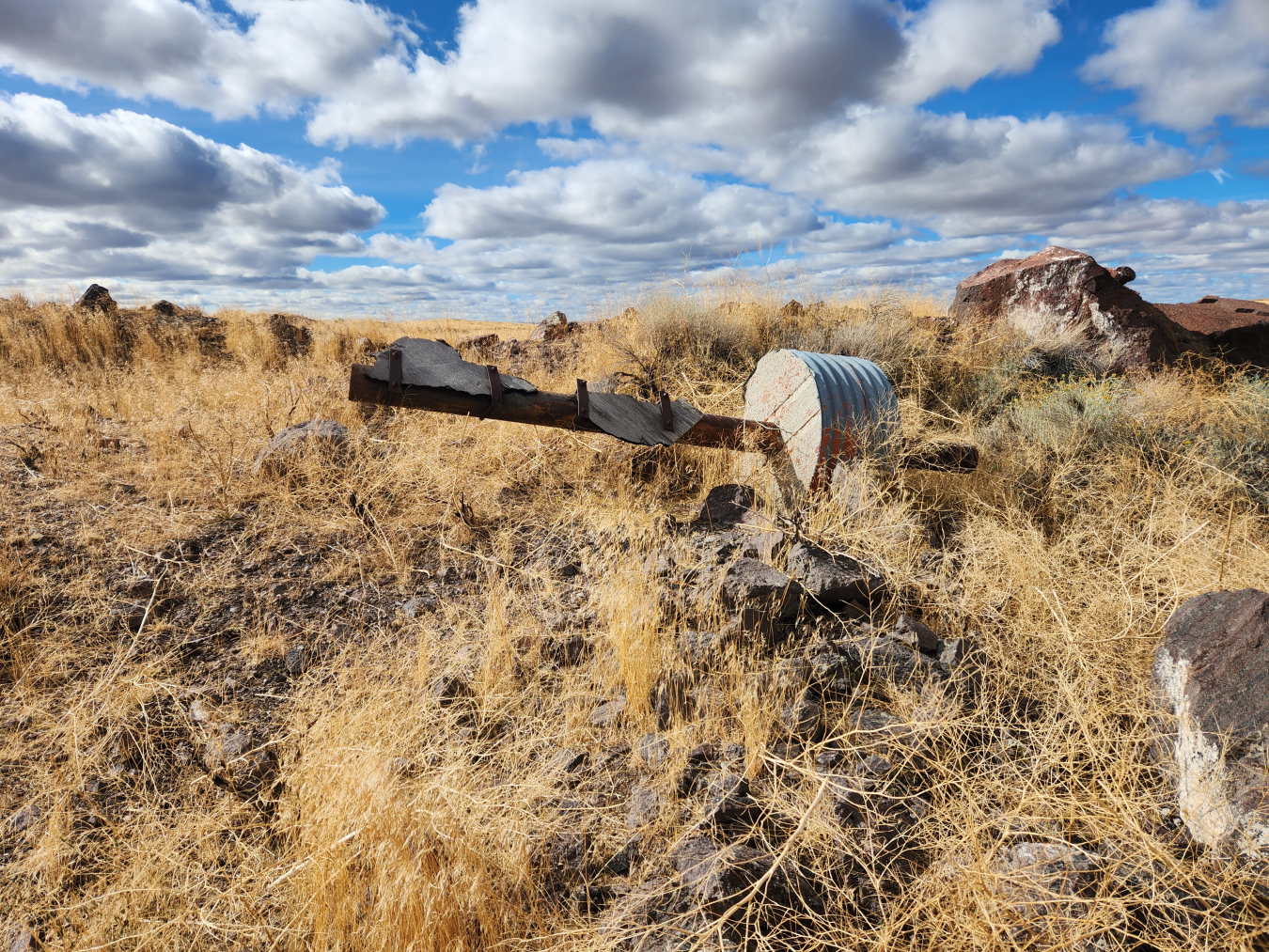Interpretive sign provides historical insights and details about how large crater came to be in the rolling hills of southwest Idaho.
November 29, 2022Tucked into the rolling hills and grasslands about 40 miles southwest of Bruneau, Idaho, is the Pre-Schooner II Site. It was the location of a non-nuclear cratering experiment conducted by the U.S. Atomic Energy Commission (AEC), a predecessor agency to DOE, and the U.S. Army Corps of Engineers (USACE) in 1965. The U.S. Department of Energy (DOE) Office of Legacy Management (LM) recently installed an interpretive sign at the site to share the history of the project.

A trench coming from the northwest of the Pre-Schooner II crater reveals the geology at the site. The test helped uncover how cratering impacts hard, dry rock.
Project Pre-Schooner II played an important role in the Plowshare Program, which tested uses for nuclear explosives for industrial applications, such as increasing production of ore and oil, and civil works projects, like construction of highways, railroads, and harbors. The objective of the Pre-Schooner II test was to learn about cratering in hard, dry rock, including rhyolite, a volcanic rock.

The Pre-Schooner II site was a non-nuclear crater test that took place in 1965. The resulting crater is about 190 feet in diameter and 61 feet deep.
The 85.5-ton subsurface detonation created a crater more than 190 feet in diameter and 61 feet deep. The experiment was documented and measured to inform future nuclear tests, including the Schooner test in Nevada that was completed in 1968.
”Pre-Schooner II provided the U.S. Atomic Energy Commission with useful data they could incorporate into future tests at other locations,” said LM Site Manager Meghann Hurt. “As the new sign says, the geology at this location made it ideal to test cratering with the use of non-nuclear explosives.”

The remains of a motion target sit outside the crater at the Pre-Schooner II site. Motion targets were used to gather information regarding cratering physics, which in turn helped develop models for other events.
After the project analysis of the experiment, the AEC conducted site cleanup in 1966 and removed most of the equipment, instruments, and temporary structures.
In 2019, LM assumed long-term stewardship responsibilities for the Pre-Schooner II site, managing the site under its Plowshare/Vela Uniform Program. Plowshare/Vela Uniform sites are locations where non-nuclear tests were conducted or where nuclear tests were cancelled after some non-nuclear activities had occurred. LM maintains records on the Pre-Schooner II Site and responds to stakeholder inquiries. The site is on public land overseen by the Bureau of Land Management (BLM) Jarbidge Field Office in Idaho.
U.S. Department of Energy (DOE) Office of Legacy Management (LM) and support staff recently traveled to install an interpretive sign at Pre-Schooner II in Idaho. Pictured in the photo: (Left to right) Lisa Bade, LM Strategic Partner; Meghann Hurt, LM Site Manager; Rick Findlay, LM Strategic Partner; Jackie Petrello, LM Strategic Partner.
The idea for a sign came from LM Program Office Director Carmelo Melendez after he toured the site in 2021. He recognized that an interpretive sign at the location would provide visitors with historical insights and details on the large crater. The concept development for the sign began in early 2022 and LM collaborated with the BLM realty specialist in the Jarbidge Field Office. After fabrication of the sign, LM worked with BLM to obtain a right-of-way agreement for installation in October 2022.
”With the Pre-Schooner II Site being located on BLM land, which is open to outdoor enthusiasts, the new sign will help inform the public about a small piece of our nation’s history and the significance of a crater situated in such a remote area,” said Hurt.
More information on the Plowshare and Vela Uniform Program Sites can be found on the LM website.

